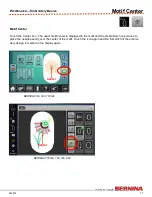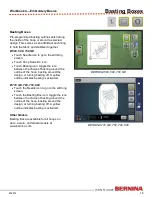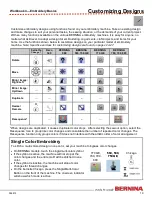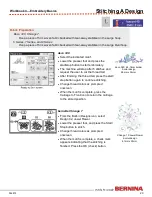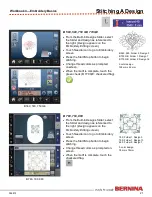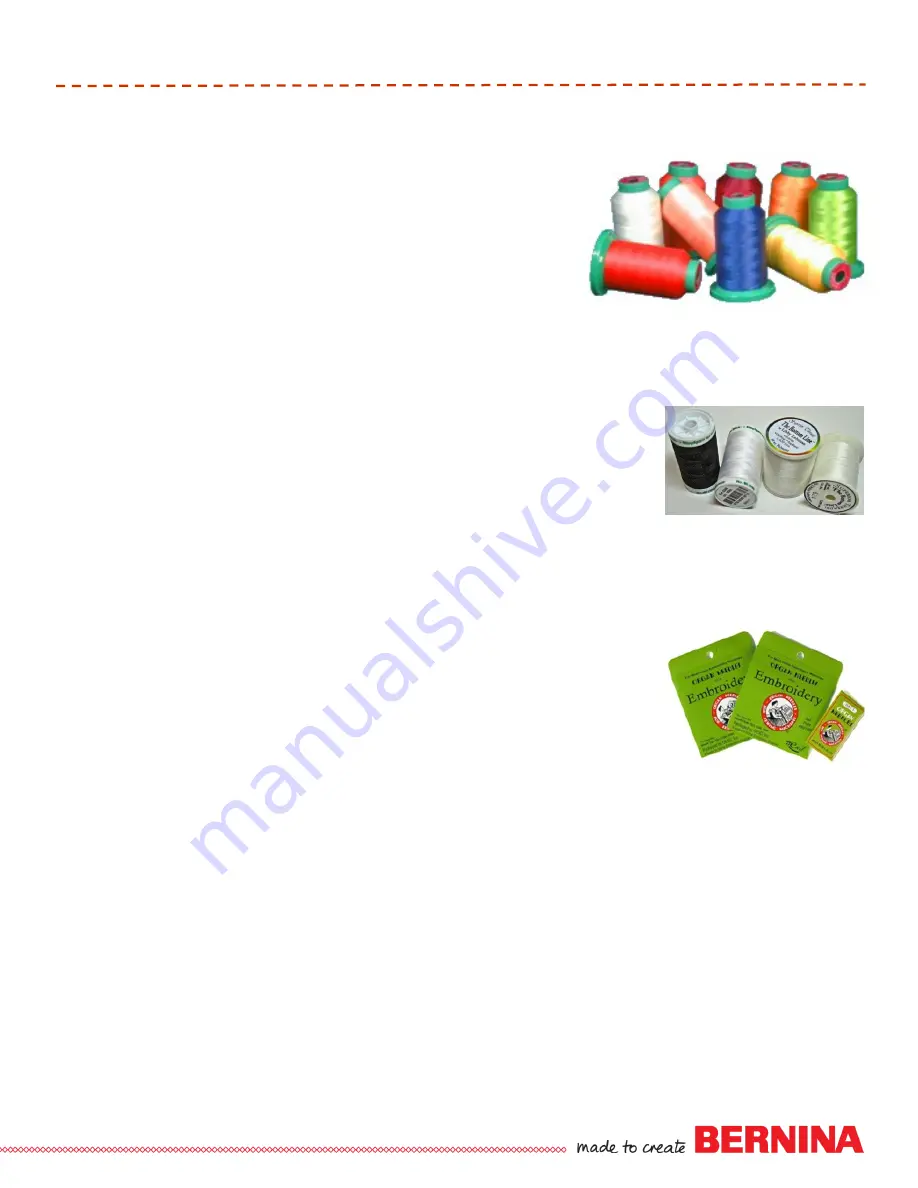
7
052815
Workbook 4—Embroidery Basics
Needle and Thread
Embroidery Needles
Not all needles are appropriate for use in embroidery machines. As with all sewing
projects, needle choice is determined by the fabric, thread, and application. For
most embroidery, an Embroidery needle is the best choice. They are designed to
withstand the faster speed of embroidery machines as well as the wear and tear
of stitching through dense designs.
Occasionally, other needles may be recommended for specially digitized
techniques, such as a Wing needle for heirloom embroidery.
The size of the needle depends on the fabric you are using. As with any sewing you do, heavier fabric
requires a larger needle (higher number ) and finer fabrics use a smaller needle (lower number).
Note: If
stitching a dense design, use a small needle so it will slide into the stitches. You also want to select a point
that relates to your fabric.
For example, use a Universal for most fabrics, Ballpoint for knits, etc.
Ballpoint needles (designated by SUK) have also shown to have positive results when embroidering with
metallic thread. Due to the wiry nature and memory of this type of thread, a traditional embroidery needle with
a sharp point can cut the thread, causing breakage. Ballpoint needles are blunt enough to avoid this.
Titanium-coated Embroidery needles are a great choice because they last 3 times longer than regular
embroidery needles. They work well for almost any type of embroidery and are especially useful when using
an adhesive-coated stabilizer. The coating on the needle helps it move in and out of the stabilizer, resisting
any adhesive residue. Titanium needles are often gold-colored and should be changed after 90,000 stitches.
Change your embroidery needle every 2-3 hours or about every 50,000 stitches. This may seem frequent but
remember how fast your embroidery machine runs and how many times that needle has to go through the
fabric and through layers of stitches and stabilizer compared to regular sewing.
Embroidery Thread
Most designs are digitized for 40-weight rayon or polyester thread,
which are the most commonly used types by machine embroiderers.
Both have a beautiful rich look; both are widely available. Polyester is
stronger, more colorfast, and more abrasion resistant making it
especially good for embroidering children’s clothing. Polyester is also
usually more economical than rayon.
Select high-quality embroidery thread because bargain brands may cause excessive thread breakage while
stitching, and may produce undesirable final results. Specialty threads such as metallics, acrylics, and silk
may also be used but are often employed as accents rather than for full designs.
Bobbin Thread
Use a lightweight fine thread will help avoid thread build-up on the bottom side of
your project, keeping the design supple and avoiding a thick, hard result. Bobbin
thread is designed to be strong so it will withstand the high-speed stitching of an
embroidery machine. They are usually more economical than embroidery thread
and will save time in thread changes if you use the same neutral-colored bobbin
thread for all needle thread changes. Most thread companies offer a bobbin
thread, sometimes in a wide array of colors. Because bobbin threads are so fine, your bobbin will hold more
so you will be changing the bobbin less frequently than with heavier thread.

















